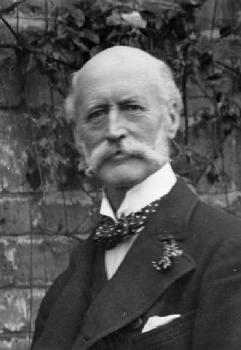
Marquess of Aberdeen and Temair, in the County of Aberdeen, in the County of Meath and in the County of Argyll, is a title in the Peerage of the United Kingdom. It was created on 4 January 1916 for John Hamilton-Gordon, 7th Earl of Aberdeen.
Gordon is a surname with multiple origins, especially Scottish. The masculine given name Gordon is derived from the surname.

Marquess of Huntly is a title in the Peerage of Scotland that was created on 17 April 1599 for George Gordon, 6th Earl of Huntly. It is the oldest existing marquessate in Scotland, and the second-oldest in the British Isles; only the English marquessate of Winchester is older. The Marquess holds the following subsidiary titles: Lord Gordon of Strathaven and Glenlivet and Earl of Aboyne, and Baron Meldrum, of Morven in the County of Aberdeen.

Earl of Rothes is a title in the Peerage of Scotland. It was created in 1458 for George Leslie, 1st Lord Leslie. He had already been created Lord Leslie in 1445, also in the Peerage of Scotland. His grandson, the third Earl, having only succeeded his elder brother in March 1513, was killed at the Battle of Flodden on 9 September of the same year. His son, the fourth Earl, served as an Extraordinary Lord of Session. Lord Rothes was also tried for the murder of Cardinal Beaton but was acquitted.
Viscount Aboyne was a title in the Peerage of Scotland. It was created on 20 April 1632 for George Gordon, Earl of Enzie, eldest son of George Gordon, 1st Marquess of Huntly, with remainder that the title should pass to his second son the Hon. James Gordon on his death or on the death of his father, whichever came first. On Lord Huntly's succession to the marquessate in 1636 the viscountcy passed according to the special remainder to his second son, the second Viscount. He never married and on his death in 1649 the title became extinct.
The title of Earl of Aboyne in the Peerage of Scotland is held by the Gordon family, with the heir apparent to the Marquessate of Huntly using it as a courtesy title.

Earl of Norwich was a title that was created four times in British history, three times in the Peerage of England and once in the Peerage of Great Britain. The first creation came in the Peerage of England in 1626 in favour of the courtier and politician Edward Denny, 1st Baron Denny. He had already been created Baron Denny, of Waltham in the County of Essex, in 1604, also in the Peerage of England. Lord Norwich was the grandson of Sir Anthony Denny, confidant of Henry VIII, and the nephew of Sir Edward Denny. He had no sons and the titles became extinct on his death in 1630.

Clan Gordon is a Highland Scottish clan, historically one of the most powerful Scottish clans. The Gordon lands once spanned a large territory across the Highlands. Presently, Gordon is seated at Aboyne Castle, Aberdeenshire. The Chief of the clan is the Earl of Huntly, later the Marquess of Huntly.

George Gordon, 9th Marquess of Huntly,, styled Lord Strathavon until 1795 and Earl of Aboyne from 1795 to 1836, was a Scottish peer and soldier.

Charles Gordon, 10th Marquess of Huntly, styled Lord Strathavon from 1794 to 1836 and Earl of Aboyne from 1836 to 1853, was a Scottish peer, politician, courtier, and cricketer. He was a Member of Parliament, first as a Tory (1818–1830) and then a Whig.

Alexander Seton, 1st Earl of Huntly, who adopted the family name of Gordon from about 1457, was a powerful 15th-century Scottish magnate. He was knighted in 1439/1440 and was Lord of Badenoch, Gordon, Strathbogie and Cluny.
Granville Charles Gomer Gordon, 13th Marquis of Huntly, styled Earl of Aboyne until 1987, is a Scottish peer and the Premier Marquess of Scotland.

Charles Gordon, 11th Marquess of Huntly, PC, DL, JP, styled Lord Strathavon until 1853 and Earl of Aboyne between 1853 and 1863, was a Scottish Liberal politician. He served under William Ewart Gladstone, he was appointed Captain of the Honourable Corps of Gentlemen-at-Arms between January and June 1881.
John Gordon, 3rd Earl of Aboyne was the son of Charles Gordon, 2nd Earl of Aboyne and Elizabeth Lyon. He succeeded his father as 3rd Earl of Aboyne in April 1702. On the date of his death 7 April 1732, he was succeeded in his titles by his eldest son. He was just 32 years old.

Charles Gordon, 4th Earl of Aboyne. The eldest son of John Gordon, 3rd Earl of Aboyne and Grace Lockhart, he succeeded his father as 4th Earl of Aboyne on 7 April 1732. On his death in 1794 he was succeeded in his titles by his eldest son.
James Gordon, 2nd Viscount Aboyne was the second son of George Gordon, 2nd Marquess of Huntly, a Scottish royalist commander in the Wars of the Three Kingdoms.
Henrietta Gordon was a Scottish-born courtier, a maid of honour to Princess Henrietta, youngest daughter of Charles I of England.
Frendraught Castle or House is a 17th-century house, about 6 miles (9.7 km) east of Huntly, Aberdeenshire, Scotland, and 1 mile (1.6 km) west of Largue, on the site of a 13th-century castle.

Henrietta Stewart (1573–1642) was a Scottish courtier. She was the influential favourite of the queen of Scotland, Anne of Denmark.
Sophia Hay, Viscountess Melgum was a Scottish noblewoman.











